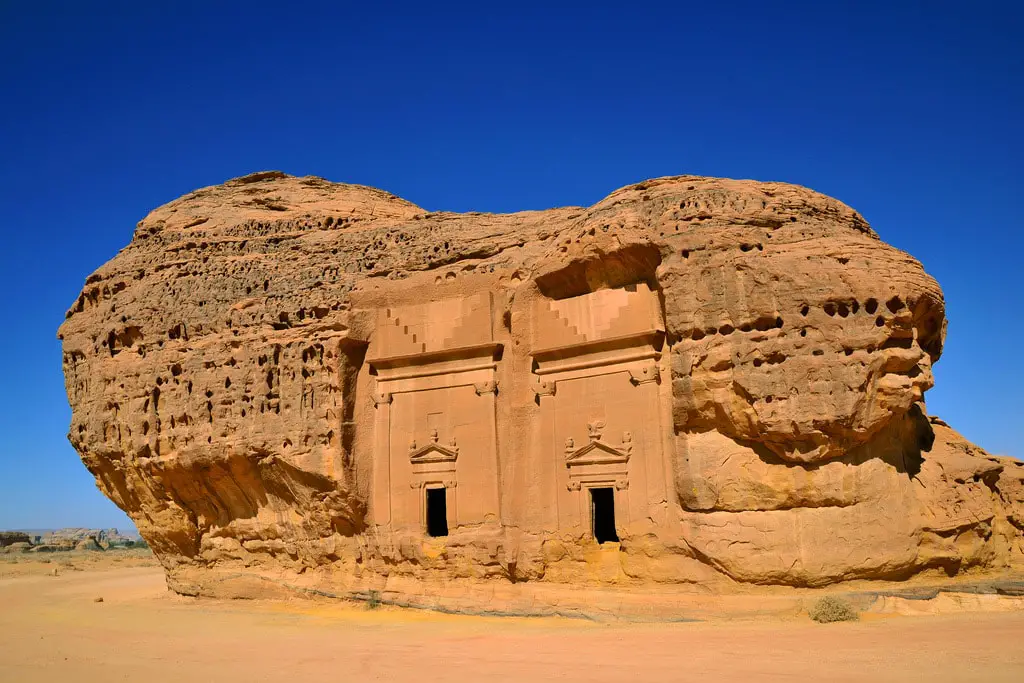Wondermondo 🢖 World 🢖 Wonders of Asia 🢖 Wonders of Saudi Arabia
Territory
Wonders of Saudi Arabia
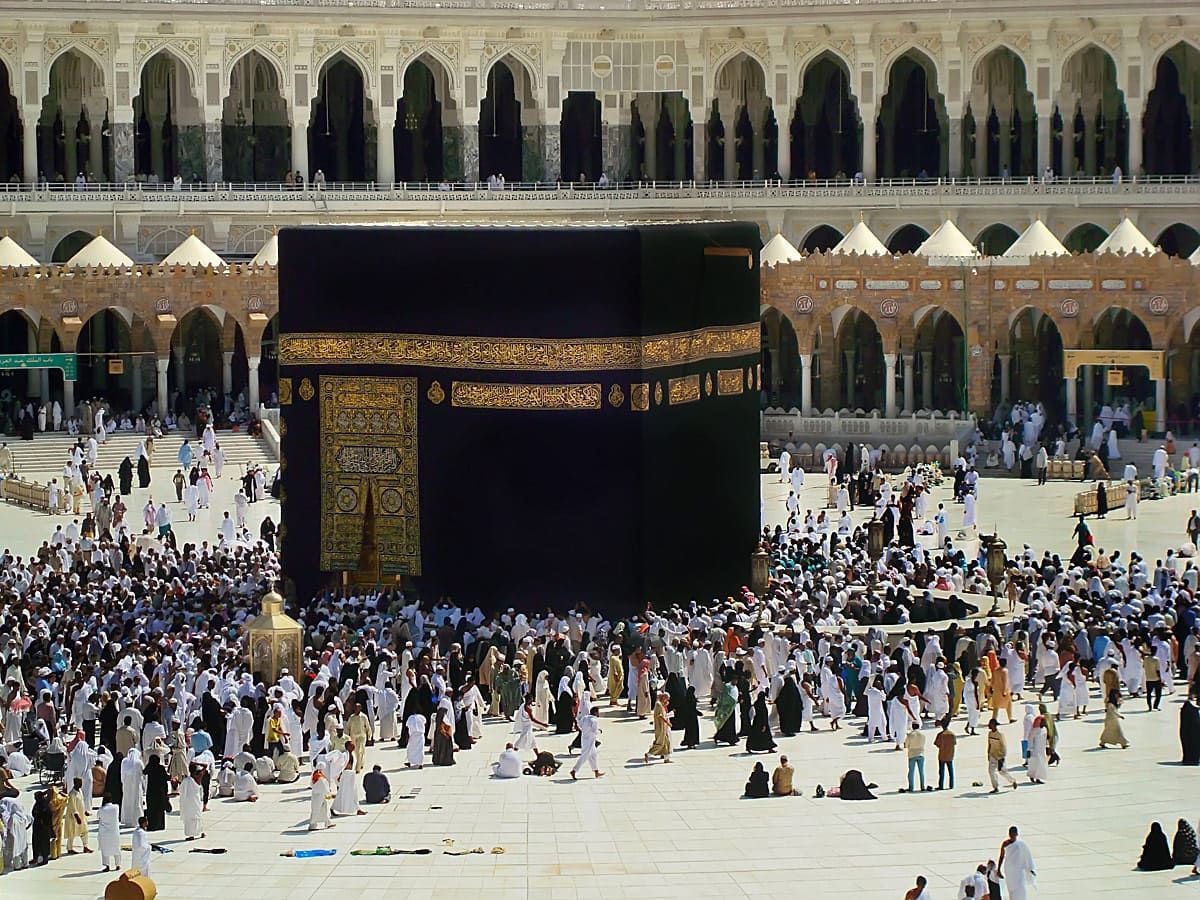
 Highlights
Highlights
Many wonders of Saudi Arabia are little known to the outside world, and, unfortunately, many amazing attractions are deliberately destroyed.
Nevertheless, some Saudi Arabian landmarks are world-renowned, and one – Kaaba in Masjid al-Haram, Makkah – is one of the most important places in the world. Highlights of Saudi Arabia are:
- Islamic sites. Here was born one of the major world religions and Muslims from the whole world are coming to visit the sacred sites in Makkah and Medina.
- Archaeological monuments. Endless deserts and mountains contain countless sites with prehistoric cliff art, here are found megaliths and ruins of ancient cities. Very interesting and impressive is Mada’in Saleh. According to legends, sands of deserts still are hiding ruins of ancient cities.
Map with the described wonders
If you see this after your page is loaded completely, leafletJS files are missing.
 Top 25 wonders of Saudi Arabia
Top 25 wonders of Saudi Arabia
Geological wonders
Umm Jirsan
Al Madinah
The longest known lava cave in Arabia, 1.481 km long. Passages are up to 45 m wide and contain rich collection of palaeontological and archaeological material. Contains old stone wall.
Al Wahbah crater
Makkah
Impressive volcanic crater (maar), up to 250 m deep, diameter – 2 km. Bottom is covered with white sodium phosphate sediments.
Maha’jah Rocks (Cathedral Rock)
Tabuk
Group of amazing cliffs with enormous natural arches, and hoodoos.
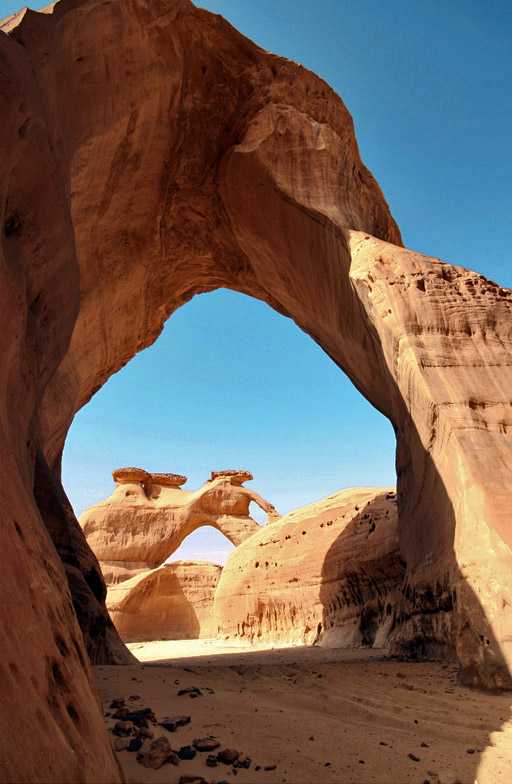
Murubbeh Cave
Al Riyadh
Enormous cave chamber, 150 m long, 80 m wide, and up to 50 m high. Rich with archaeological and palaeontological material. Cave serves as a trap of cool air.
Antarah ibn Shaddad
Al Quasim
An unusual, large rock on the mountaintop. A place of Pre-Islamic legends where a hero and poet Antarah met with his beloved Abla.
Archaeological wonders
Al-‘Ula
Al Madinah
The ruins of the old city are located over the former capital of the ancient Dedanites, with more than 2000 years old archaeological monuments. Flourished in 650 – 1230 AD. The current old city was developed mainly in the 1300ies.
Mada’in Saleh (Al-Hijr)
Al Madinah
Ancient Lihyan and Nabatean city with 131 monumental rock-cut structures, mostly tombs. City developed since around the 6th century BC and flourished in the 1st – 2nd century AD. It is possible that this is a more important center of civilizations than considered thus far.
Shuwaymis rock art site
Ha’il
One of the major rock art sites in the world, contains many thousands of drawings from 5,000 – 3,000 BC.
Marid Castle (Mard castle)
Al Javf
Remnants of a castle that was built before 272 AD. The walls of the castle still rise to a considerable height.
Umm Sanman
Ha’il
Site with a huge amount of petroglyphs, with Levallois – Mousterian stone artifacts at the cliff. Here in the Middle Paleolite was located a bank of large inland lakes, drawings made from the Middle Paleolithic to Early Islamic time. Examples of Thamudic script – earliest writing in the Arabian peninsula.
Al Rajajil standing stones
Al Jawf
Group of standing stones, up to 3 m tall, erected some 5,000 years ago. Aligned to sunrise and sunset, contain Thamudic inscriptions.
Architecture wonders
Kaaba and Masjid al-Haram
Makkah
The largest mosque in the world was built in 638 AD to surround the Kaaba – the holiest site of Islam. Contains several other sacred places, including Zamzam Well which is widely believed to be a miraculous natural spring but in reality, is handmade well.
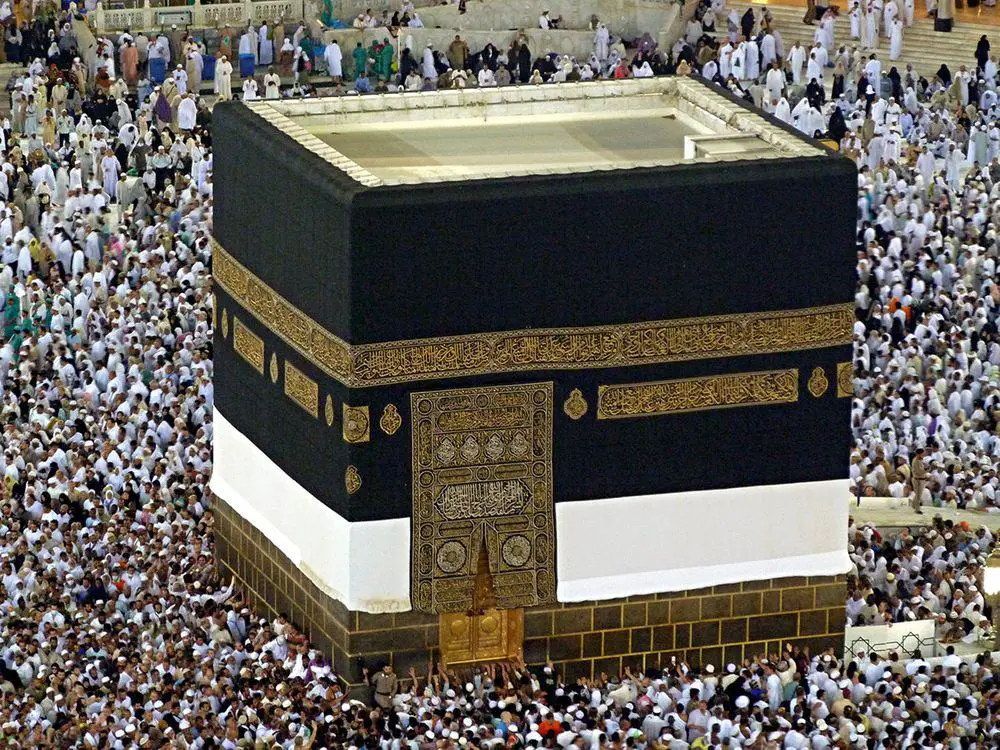
Kingdom Centre
Al Riyadh
Skyscraper with unusual landmark design. The building has 99 floors and is 302.3 m tall. Constructed in 2002.
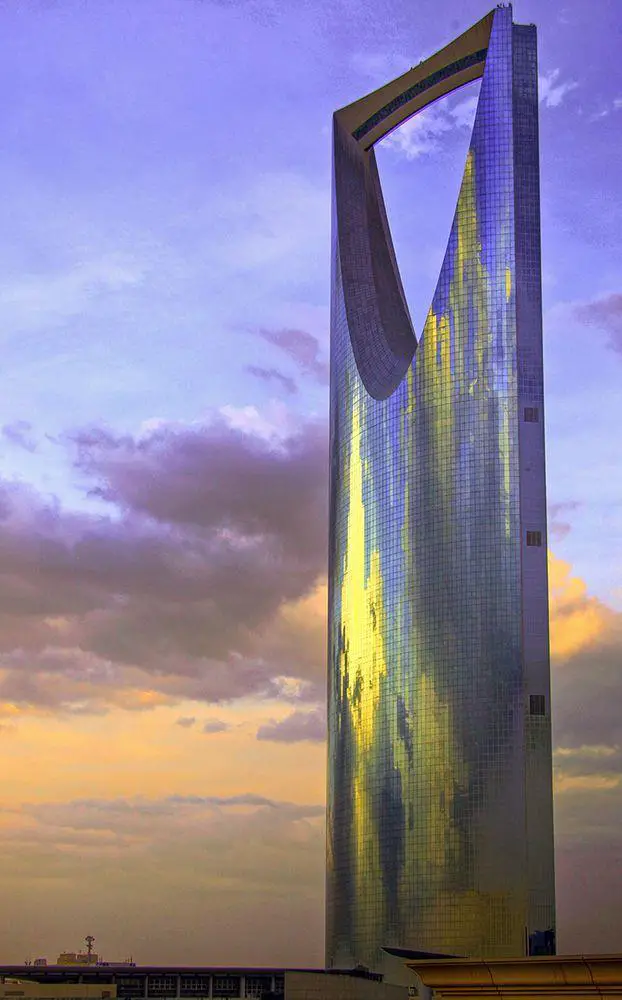
Masjid al-Qiblatain
Al Madinah
Historically important mosque. Here Muhammad commanded to change the direction of prayer from Jerusalem to Mecca. Ornate building, one of the earliest mosques in the world.
Al-Masjid al-Nabawi
Al Madinah
It is the second most important Islamic site, containing the tomb of Muhammad (Green Dome). It is the second-largest mosque in the world, built in 622 AD. It has been rebuilt numerous times, with the latest significant rebuildings dating from the 19th and 20th centuries.
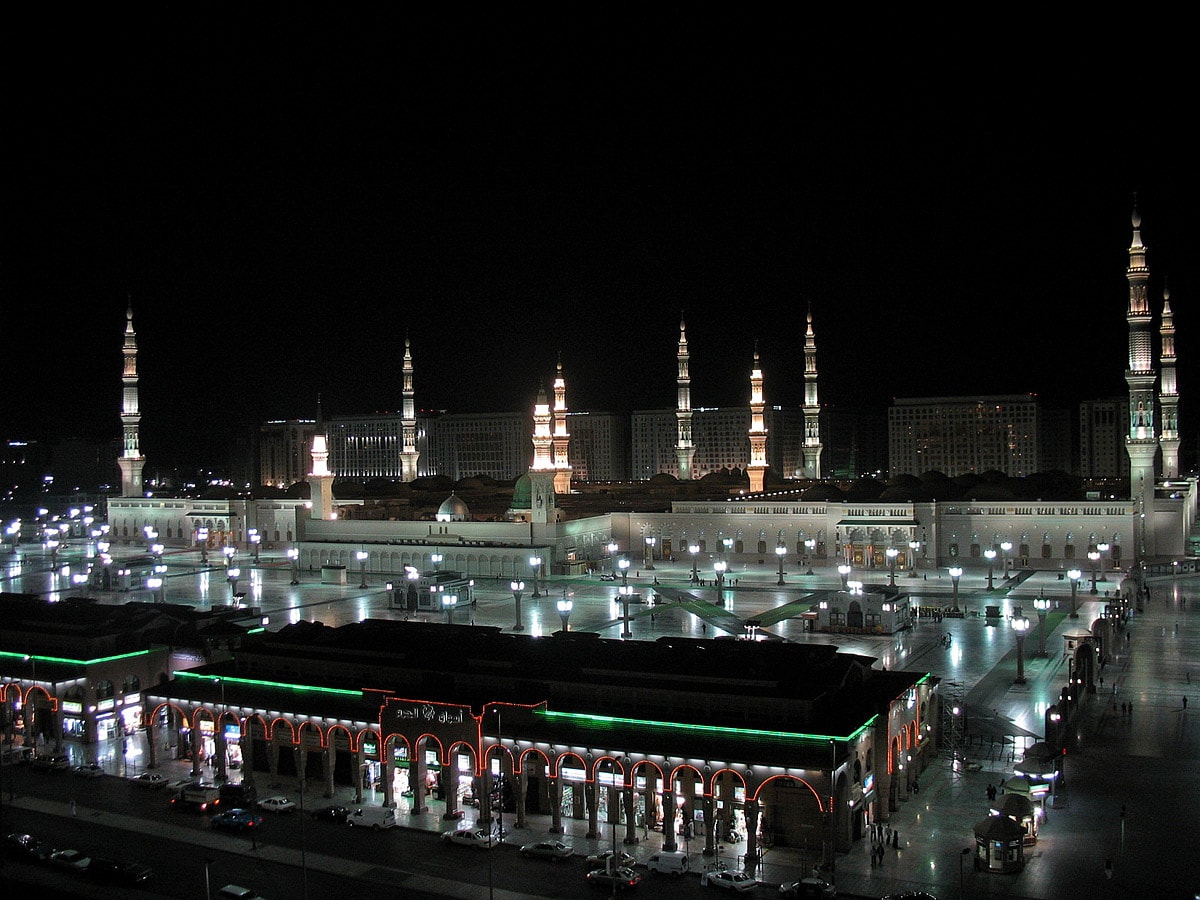
Abraj Al Bait Towers
Makkah
Building with the world’s largest floor area and the largest clock in the world. 601 m tall, with 120 floors, the floor area exceeds 1.5 million m². Constructed in 2012, the second tallest building in the world.
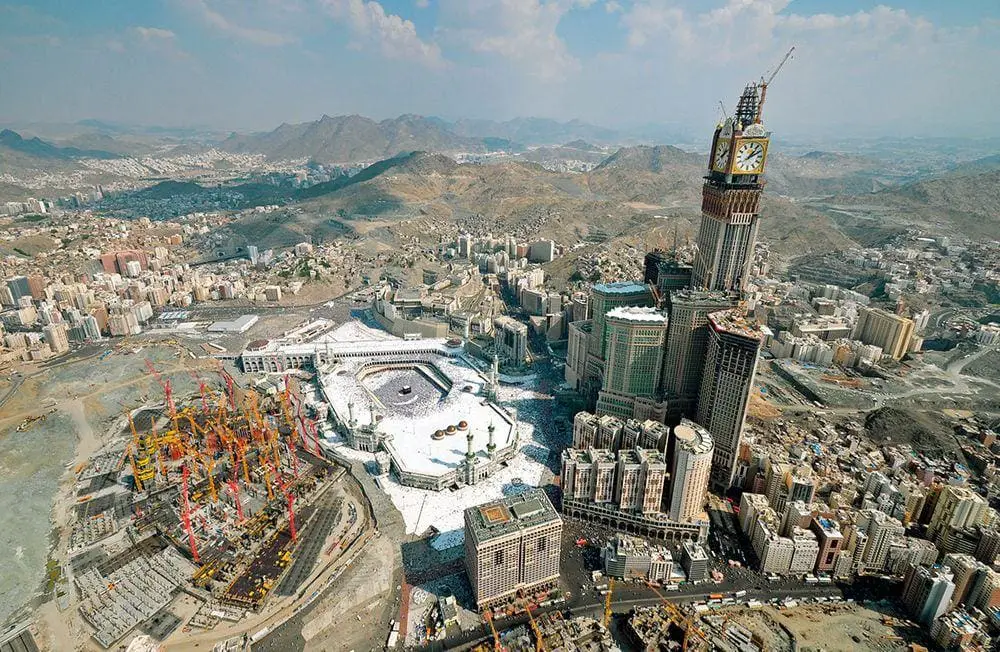
Quba Mosque
Al Madinah
The oldest mosque, construction started by the prophet Muhammad. Completely rebuilt in 1986.
Jeddah Light
Makkah
133 m tall lighthouse with an unusual design, possibly the tallest lighthouse in the world.
King Fahd’s fountain
Makkah
312 m tall water fountain, the tallest in the world. Operating since 1985.
Salwa Palace
Al Riyadh
The first royal Saudi palace, located in At Turaif. Four stories high, built in different time periods. The last large-scale construction took place in 1803 – 1814.
Dhee Ayn
Al Bahah
A historical village in a picturesque place, consists of stone towers (qasabas) built over a white marble hill.
At Turaif District
Al Riyadh
The first capital of the Saudi Dynasty, built in the 15th century in ad-Dir’iyah oasis. Many structures – palaces and other urban buildings – represent the Najdi architectural style. Flourished in the 18th and 19th centuries. Partly in ruins.
Jawatha Mosque
Eastern Province (Ash Sharqiyah)
Ruins of one of the oldest mosques in the world, constructed around 692 AD.
Al Faisaliyah Center
Al Riyadh
267 m tall skyscraper with a landmark design, constructed in 2000.
Al Dar’i Quarter
Al Javf
The historical part of the city. Preserved from the middle Islamic period, stands on the remnants of earlier buildings.
 Recommended books
Recommended books
Crossing the Kingdom: Portraits of Saudi Arabia
For many people, the Kingdom of Saudi Arabia evokes images of deserts, camels, and oil, along with rich sheik in white robes, oppressed women in black veils, and terrorists. But when Loring Danforth traveled through the country in 2012, he found a world much more complex and inspiring than he could have ever imagined.
Saudi Arabia – Culture Smart!: The Essential Guide to Customs & Culture
Culture Smart! provides essential information on attitudes, beliefs, and behavior in different countries, ensuring that you arrive at your destination aware of basic manners, common courtesies, and sensitive issues. These concise guides tell you what to expect, how to behave, and how to establish a rapport with your hosts. This inside knowledge will enable you to steer clear of embarrassing gaffes and mistakes, feel confident in unfamiliar situations, and develop trust, friendships, and successful business relationships. Culture Smart! offers illuminating insights into the culture and society of a particular country.

